WILDFIRE RESILIENCE EXECUTIVE SUMMARY
California has undertaken an urgent paradigm shift to address the growing wildfire crisis. Given the frequency and scale of recent fires, preventative wildfire resilience efforts such as prescribed burns, strategic fuel breaks and home hardening alter a fire’s behavior and help both communities and wildlands survive wildfires.
California’s recent $1.5 billion investment in wildfire resilience is protecting California’s watersheds, wildlands, and communities. In 2021, California dramatically scaled wildfire resilience investments from $200 million to $1.5 billion and shifted State business practices to quickly put resources into projects.
This funding launched more than 552 wildfire resilience projects in less than a year. By speeding up and increasing the scale of wildfire resilience activities from home-hardening to fuel breaks to reforestation, these investments are giving California a fighting chance to match the scale and frequency of the wildfire crisis.
In addition to direct resilience projects that modify fire behavior, California also invested in the structural foundation to sustain this speed of wildfire resilience at a larger scale, including workforce development, regulatory efficiencies, and wood products businesses. California also shifted State business practices around contracting, grants, and environmental oversight processes to get resources on the ground quickly.
The Wildfire Crisis: Over the last two years, more than 17,000 fires consumed nearly 7 million acres of California – an area the size of the state of Massachusetts. These fires decimated mountain communities including Grizzly Flats, Greenville, and Berry Creek and forced well over a quarter of a million people to evacuate. Wildfires compound existing crises from health to homelessness straining the endurance of weary California communities.
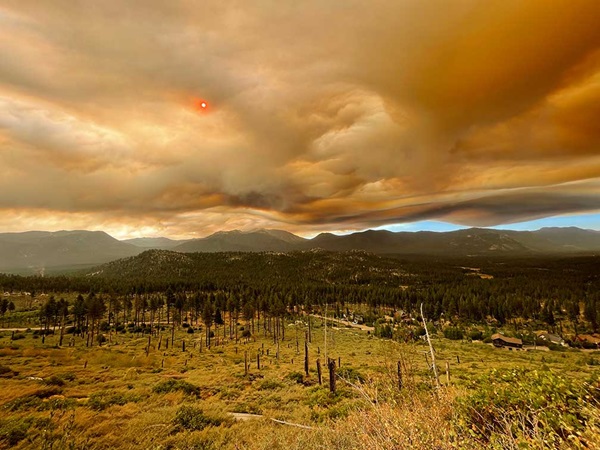
Figure 1 Caldor fire smoke.
In 2020, California recorded the first “giga” fire, the August Complex, followed in 2021 by the Dixie fire, just short of a million acres. Fire behavior was unprecedented with flames larger than 20-story buildings, burning three miles ahead of the main fire, and for the first time in history, burning up and over the granite crest of the Sierra Nevada range.
In the last two fire seasons, an estimated 19 percent of the old growth Giant Sequoia trees were destroyed, tens of thousands of trees, dwarfing a previous record set during the middle-ages when roughly two dozen monarch sequoias died in one year. Most of these fires were concentrated in the upper watersheds of the Sierra Nevada range, which sources 60 percent of California’s water, exacerbating drought conditions, and creating a reinforcing cycle of climate catastrophes.
History of the Fire Crisis: This historic crisis stems from two compounding factors: Climate driven drought and heat colliding with century-old political decisions of over-logging and fire suppression that left California’s forests weak and over-stressed resulting in an unparalleled crisis.
Fire, like water, is an integral part of California’s natural ecology. Many ecosystems have adapted to frequent fires that burn at low temperatures and help germinate seeds and return nutrients to the soil. California Native American tribes actively managed California’s wildlands with cultural fire for millennia.
But a federal fire suppression policy that extended into the 1970s changed the structure of the forest and caused significant buildup of fuel, much of which has to be removed before natural fire regimes can be restored.
Recent wildfires are far outside of their ecological boundaries. Much like a dam breaking and releasing pent up water, current fires are burning 100 years of woody material in several weeks rather than several decades. Unprecedented drought and heat dry out that fuel and the result is catastrophic wildfires that decimate ecologies and communities in their path.
Solving the Fire Crisis: Although wildfires are growing more extreme, a fire-resilient California is within reach. Science-based adaptations are proving effective. While fires aren’t going away, adaptations across wildlands, around communities and within communities are changing how and where fires burn, improving the safety of communities and ecosystems. The fires will still burn, but these adaptations will help return fire to its ecological role, even in an era of climate change.
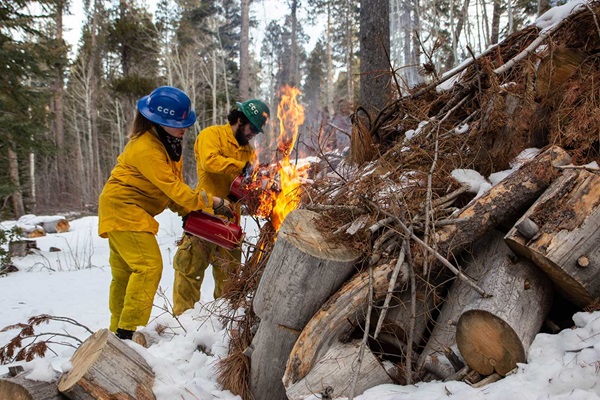
Figure 2 California Conservation Corps pile burn near Lake Tahoe.
Budget overview: In 2021, the Governor and the Legislature appropriated nearly $1.5 billion in wildfire resilience, a significant increase over the $200 million appropriated to this program starting in 2018. The program invests across three fronts of wildfire resilience: interventions within communities, around communities, and across the landscape, which together help lower the intensity of fire, slow its spread, and keep communities safe in the age of megafires. The budget was designed in two phases to deliver both speed and dramatically scale wildfire resilience efforts.
- Phase 1: Recognizing that wildfires don’t wait for the budget cycle, the Governor and the Legislature appropriated $536 million in April 2021 in “early action” funds to get a head start on wildfire season 2022 and get a six-month lead in launching several new initiatives. As of March 1, 2022, this funding launched 365 new resilience projects and over 90 percent of these funds have been committed. Most projects take between one to three years to complete, so by starting in April rather than August and expediting internal processes through contracting relief and emergency board meetings to expedite grants, early action projects moved significantly faster. Over a dozen projects were completed around summer 2021 helping during the complicated fire season including:
-
- A State Coastal Conservancy grant launched grazing on the Arroyo Hondo Preserve, which protected the preserve and its historic structures during the Alisal Fire in Santa Barbara.
- A San Diego Conservancy grant delivered defensible space chipping to over 200 San Diego low-income homes prior to this fire season.
- A Department of Fish and Wildlife investment mitigated erosion and flooding after the Caldor Fire.
- Phase 2: In September 2021, the Legislature appropriated an additional $988 million designed to invest in much larger projects as well as investments that address structural hurdles like workforce development and wood utilization infrastructure. These funds were designed to be a foundation for the long-term wildfire program and a program with funds that would launch programs within the year. As of March 1, 2022, these investments already launched 187 projects and nearly 30 percent of the funds are committed.
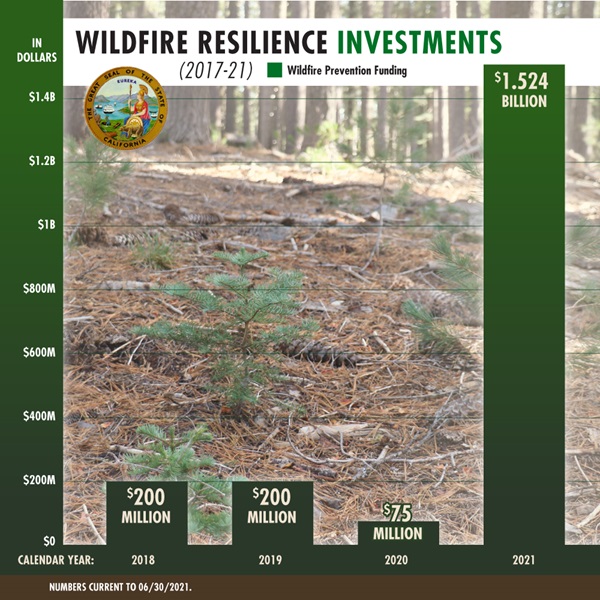
Figure 3 Ramp-up of wildfire resilience investments through the years.
California’s Approach to Wildfire Resilience
A wildfire resilient California requires simultaneous actions on three fronts:
- Within Communities: Home hardening and defensible space help make homes less prone to ignition when fires are burning. Simple home improvements like smaller mesh vents on attics and double-pained windows prevent embers from getting into homes. Fire-resilient landscaping, called defensible space, keeps direct flames, and heat off a home during a fire. These steps dramatically improve a house’s survivability in a wildfire. These individual actions are even more effective when neighborhoods do them collectively, thus preventing home-to-home ignition during a wildfire.
California’s building codes and defensible space rules incorporate these standards and help bring communities collectively up to resilience. For example, in the 2018 Camp Fire, the homes built after the 2008 Chapter 7A building code updates had a roughly 50 percent survival rate, while homes built before 2008 had a 10 percent survival rate. Millions of homes will require simple retrofits to achieve the higher standard.
Wildfire resilience investments within communities include:
-
- Education and outreach through the UC Advisors
- Expanding the defensible space inspector program
- Launching a new home hardening retrofit program for lower income Californians
- Wildfire resilience grants to support home hardening and defensible space projects.
These efforts compliment a recent collaboration between CAL FIRE and the Department of Insurance to create insurance incentives and discounts for both homeowners and neighborhoods to encourage risk reduction activities like defensible space, home hardening and fuel breaks.
- Around Communities: Strategic fuel breaks, wide long strips of thinned vegetation and forest, change the behavior of a fire by changing the fuel bed. This gives fire fighters a tactical advantage during a fire fight. Fuel breaks enable fire-fighters to stage equipment, establish defensible lines, and create buffers along roads to help evacuation during a wildfire. During the 2021 Caldor Fire, the network of fuel breaks around Pollock Pines and South Lake Tahoe helped save the communities. Fire fighters saw flame lengths drop from 150 feet to 15 feet when the fire entered a shaded fuel break in Christmas Valley, enabling firefighters to approach the fire and keep it away from homes. Wildfire Resilience Investments in Fuel breaks include:
-
- Wildfire Resilience Grants to communities and counties
- CAL FIRE unit fuel reduction projects
- CAL FIRE fuel reduction crews
- Forestry Corps, California Conservation Corps Fuels crews
- Across Watersheds and Wildlands: California’s drought-stressed wildlands are at critical risk when catastrophic fires break out. High intensity wildfires, like the Dixie Fire, destroyed the Feather River watershed, the headwaters of the State Water Project. The Sierra Nevada region, which sources 60 percent of California’s water, has experienced more fire in the first two years of this decade than in any of the previous seven decades.
Resilience interventions for California’s wildlands either restore native plants or remove excess fuel to the point that natural fire or grazing regimes can be restored.
But the mosaic ownership of California’s landscapes complicate execution of these projects. The Federal government owns 57 percent of California’s wildlands, the State owns 3 percent, and 40 percent is held by private entities and tribes. Since fires don’t pause at jurisdictional boundaries, California’s wildfire resilience investments ensure that every landowner type has the resources and coordination to establish cohesive, landscape-scale resilience, including:
-
- A large forest health grant program
- Wildfire resilience programs for State-owned land including State Parks and Department of Fish and Wildlife
- Grants for small forest landowners, who own 26 percent of California’s forestland in small patchwork parcels
- A new grant program exclusively for California Native American Tribes

Figure 4 Three fronts of wildfire resilience.
Structural Investments: To sustainably achieve wildfire resilience at a large scale the State also needed to invest in the foundation for resilience. These investments include:
- Regional Collaboratives: The State is investing in regional collaboratives to drive state-wide grants and programs to ensure fire resilience is cohesive and is tailored to local conditions.
-
- California’s diverse ecologies, from the coastal redwoods to southern California chaparral, all have unique natural fire regimes and therefore require a tailored approach. By investing in regional collaboratives and regional planning, local knowledge and drive help direct state and federal investments. The Department of Conservation runs the Regional Forest and Fire Capacity Program, while the State Conservancies anchor the regional strategies and help develop more local collaboratives. Regional programs include:
- Regional Forest and Fire Capacity Program
- State Conservancies
- California’s diverse ecologies, from the coastal redwoods to southern California chaparral, all have unique natural fire regimes and therefore require a tailored approach. By investing in regional collaboratives and regional planning, local knowledge and drive help direct state and federal investments. The Department of Conservation runs the Regional Forest and Fire Capacity Program, while the State Conservancies anchor the regional strategies and help develop more local collaboratives. Regional programs include:
- Science and Data: Achieving effective, long-term forest health and restoration during a dynamic environment of high-severity wildfire and climate change requires rigorous monitoring and robust scientific inquiry. State investments in science and data include:
-
- Spatial data investments like LiDAR
- Ground data investments like Forest Inventory Assessment Plots
- Data analytics tools like forest change detection
- Research grants to further scientific knowledge like the connection between forests and drought.
- Permit Efficiencies: State investments in regulatory reform are expediting and simplifying environmental oversight, without diluting substantive environmental protections. This included launching the California Vegetation Treatment Program (CAL VTP), a fully streamlined permitting process that incorporates CEQA, State Water Boards and Department of Fish and Wildlife ecological requirements into a single environmental review. This process has no additional fees and shortened CEQA review from several years to now several months. As of April 1, 2022, 26 projects have completed their CEQA using the CAL VTP and a total of 72 projects have started the process. The San Mateo Resource Conservation District completed vegetation treatment projects in the Coastal Zone using the CAL VTP in mere months rather than years. Investments in permit efficiencies include:
-
- Hire environmental consulting firm to conduct CAL VTP project specific analysis
- Fund staff at State Water Boards to fund synchronized permit with CAL VTP
- Funding for local air districts to support prescribed fire burn permits
- Workforce Development: Grants to develop community college programs, professional certifications, and training will be crucial to ensuring a trained workforce is available to execute projects at the faster pace. Investing in local workforce programs helps ensure State investments in wildfire resilience translate into reliable local jobs and careers. Investments include:
-
- New CAL FIRE workforce development grant program
- California Forestry Corps program at the California Conservation Corps
- Hiring CAL FIRE fuels crews
- Wood Products Infrastructure: We cannot achieve lasting wildfire resilience without major private-sector investments in forest management. A thriving market is also essential to assure that otherwise non-merchantable material is not left in the forest to be pile-burned or complicate a wildfire. By creating an economic use of these products, the state will generate strong, sustained private investments in forest health. Investments include:
-
- Loans and loan guarantees for forest/wood sector businesses
- Feed stock aggregation pilots designed to stabilize the supply chain
A Collaborative Effort: The Federal Government owns 57 percent of the wildlands in California, while the State owns 3 percent and 40 percent is privately owned. Wildfires don’t recognize jurisdictional boundaries, so a coordinated and cohesive approach is critical to surviving the crisis.
In August 2020, Governor Newsom signed the Shared Stewardship Agreement with the US Forest Service, mapping out a 20-year, science-based strategy to achieve wildfire resilience and forest health. This commitment included a goal of jointly improving 1 million acres of California’s forest and wildlands annually by 2025.
California’s $1.5 billion investment represents California’s initial investment in this joint commitment, while increases in federal funding should help fulfil the federal government’s commitment.
In January 2021, the Governor’s Forest and Wildfire Resilience Task Force developed a 99-point Action Plan to identify efficiencies, joint processes and remove barriers to a scaled and coordinated execution of our State/Federal strategy, including reaching our commitment of 1 million acres a year treated. To meet that million-acre target, the Task Force is developing a Roadmap to a Million Acres. The key elements of the roadmap include:
- State-wide strategies for prescribed fire, reforestation, wood utilization, workforce development, and other top priorities, funded through this budget;
- An interagency tracking system, building from CAL FIRE’s CALMAPPER system, to develop the first state-wide inventory of all recently completed and planned federal, state, local, and tribal forest health and fuels reduction projects; and
- A new regional framework, through the Department of Conservation’s Regional Forest and Fire Capacity (RFFC) Program, to develop and implement regional forest health and community resilience plans that are tailored to the risks and priorities in each region.
Government Paradigm Shift: California shifted its internal businesses practices to ensure government could keep pace with the speed of the crisis and a backlog of projects could be launched as quickly as possible.
- All-Hands-on-Deck: The $1.5 billion wildfire resilience budget includes 40 distinct programs being executed by 21 departments within four different agencies. This not only ensures a coordinated design, it removes layers of bureaucracy. Previously, fire resilience funding came to CAL FIRE and was then sub-granted to various state entities likes State Conservancies, State Parks, or Department of Conservation. By directly funding entities that have a role in wildfire resilience, funding gets to programs more quickly and relieves bottlenecks in budget, contracting and administrative offices.
- Expedited Grants: Departments changed their grant processes to get projects on the ground as quickly as possible. CAL FIRE opened its grant solicitations months before funds were appropriated by the Legislature, enabling them to award Forest Health and Fire Prevention grants in summer 2021 rather than Spring of 2022. Conservancies shortened grant solicitation periods down to two weeks and held emergency board meetings, approving grants months faster than standard processes.
- Slashing Procurement Timelines: Early Action legislation included special contracting provisions that reduced procurement timelines down to several months from 12 to 24 months previously. This enabled State Parks to purchase chippers and engines for fuel reduction and prescribed fire programs. The Department of Fish and Wildlife launched over 50 projects in a matter of months due to this relief.
- Permit Efficiencies: The State is working to implement environmental laws efficiently to move as expeditiously as possible on needed vegetation management. For example, California completed a 20-million-acre environmental impact review, covering the non-federal, fire-prone land in California which reduces the CEQA timeline from years to months for wildfire fuel reduction projects. The California Vegetation Treatment Programmatic Environmental Impact Report (CAL VTP) provides a CEQA platform for multi-agency permits. Although most of the funding in the $1.5 B focused on “shovel ready” projects (a project that had environmental review previously completed), many of the newer projects that either too big or too complex to use an exemption, are relying on the CAL VTP to quickly comply with CEQA.
Department: CAL FIRE
Program Title: Forest Health Grant Program
Program Description: CAL FIRE’s grant program will continue to support forest health activities throughout the State and now includes dedicated funding for Tribes. Focused on implementation acres, treatments include reforestation, prescribed fire, fuels modification, pest management, and biomass utilization.
Program Impact: The Forest Health grant program has invested over $300 million in 80 multi-landowner, landscape scale forest restoration projects. The funds are used for directly implementing forest treatments and have resulted in tens of thousands of acres treated across the state.
Resilience in Action: Blue Rush and Blue Canyon Forest Health treatments on the High Sierra Ranger District of the Sierra National Forest modified fire behavior during the Creek Fire in 2020, which burned at an unprecedented heat intensity throughout most of its footprint. These treatments reduced the intensity of fire causing less extreme tree mortality and allowing firefighters time and space to develop an active attack plan.
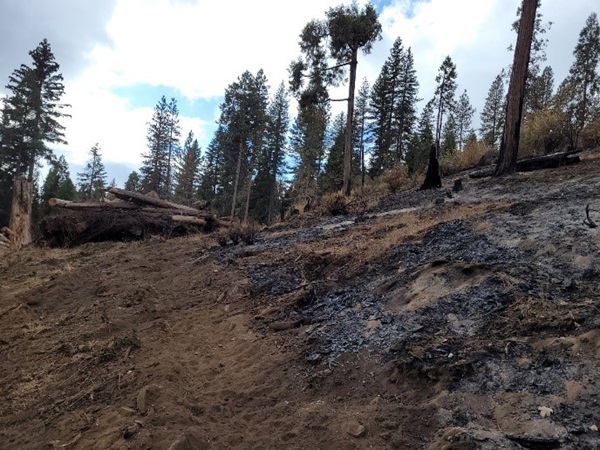
Figure 5 Blue Rush and Blue Canyon Forest Health treatments on the High Sierra Ranger District of the Sierra National Forest modified fire behavior
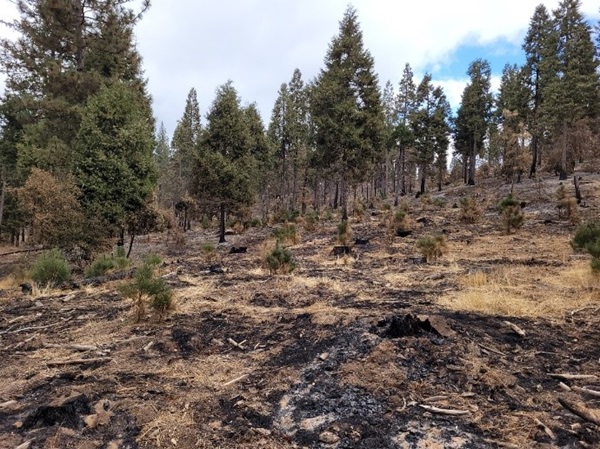
Figure 6 Blue Rush and Blue Canyon Forest Health treatments on the High Sierra Ranger District of the Sierra National Forest modified fire behavior
Department: CAL FIRE
Program Title: California Forest Improvement Program for Small Landowners
Program Description: Small forest landowners represent 26 percent of the forest landownership in California. Often small holdings with absentee landowners, they lack the resources and/or tools to manage their land. The California Forest Improvement Program (CFIP) provides small landowners with technical and financial assistance for planning, reforestation, and resource management investments that improve the health and resilience of forestland. Since its establishment in 1978, CFIP has helped with forest improvement activities on over 1 million acres.
Program Impact: The 2021 fire resilience budget was the largest single investment in small forest landowner support in California.
- 32 CFIP Projects have been awarded, from the Early Action Funding.
- Of these 32 projects, a total of 2126 acres is proposed for treatment
- An estimated 145,000 trees are proposed for tree planting
Resilience in Action: The Boeger CFIP project in Placer County funded a Forest Management Plan and forest health improvements. The project will reduce competition between the larger trees and reduce understory vegetation to promoting a healthy forest. Ultimately, this will help minimize the impacts of drought and devastating wildfire to the forest and help protect the over 30 properties and homeowners directly adjacent to this property.

Figure 7 Overstory of fire resilient pine trees with an understory of highly invasive Scotch broom a species very prone to fire.

Figure 8 A portion of the property post-treatment.
Department: CAL FIRE
Program Title: Nursery-Lewis A. Moran Reforestation Center
Program Description: Seedbanks and reforestation are at maximum capacity in California. The demand for tree-growing operations have expanded dramatically over the last few years due to California’s drought, tree mortality, and devastating wildfires sweeping through the state. Originally established in 1921, The Lewis A. Moran Reforestation Center (LAMRC) is being revitalized and expanded to play a prominent role in meeting California's reforestation needs.
The LAMRC makes seedlings available to state and private forestland owners as part of a long-term venture to support statewide reforestation needs. In our continuing mission to meet California’s growing needs, we are expanding our operations to meet our long-term vision for the state’s restoration efforts.
Also co-located at the LAMRC, is the State Seedbank. This long-term repository contains over 42,000 pounds of seed native to a broad range of areas and elevations in the state. The Seed Bank contains the highest quality seedstock available and provides seed storage for a small fee, both to public and private landowners.
Program Impact: The Wildfire Resilience funding package has:
- Upgrade facilities- funds are being used to purchase supplies and equipment and to support the expansion of seedling greenhouses.
- Expand partner greenhouse space - Funds are being offered through grants to outside cooperators to expand their greenhouse space to make room for the increasing needs of private landowner’s seedling orders.
- Improve our ability to collect cones and seeds - Funds are being used to establish a Seed Cooperative, which will formally support sharing of seed/cone and reforestation resources across agencies, nonprofits, and businesses.
- Establish long term assistance with survey of cones - Funds are being used to contract with cooperators to expand our ability to survey for cones across the entire State.
Resilience in Action: Climate Adapted Seed Tool (CAST) - The LAMRC is supporting completion of an online tool to help select the most climate adapted seed lot from across the State for reforestation projects. The LAMRC has been working with climate scientists and forest biologists to help better align planting stock with the expected climate stressors at the planting locations. Forest trees are genetically different from each other and are historically catalogued by geographically mapped areas called seed zones and seed transfer rules that specify a geographic distance beyond which populations should not be moved. In an era of rapidly changing climatic conditions, foresters must match the climatic adaptability of their seedlings to the climatic conditions of their reforestation or restoration sites. This tool will greatly expand California’s ability to match expected climatic conditions with the seedlings planted, to secure forests are healthy and productive into the future. More info can be found here.
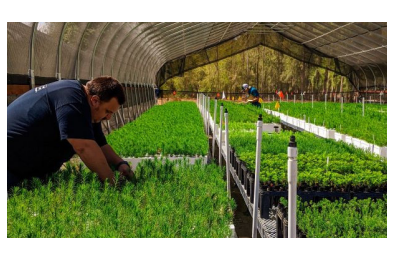
Figure 9 Lewis A. Moran Reforestation Center forester tending to seedlings.
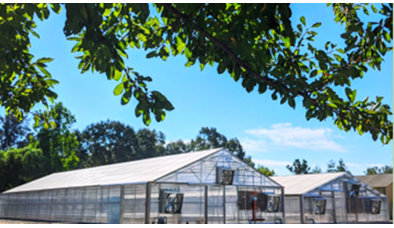
Figure 10 Lewis A. Moran Reforestation Center seedling greenhouses.
Department: CAL FIRE
Program Title: Urban and Community Forestry
Program Description: The Urban and Community Forestry Program leads the effort to advance the development of sustainable urban and community forests in California. Trees provide mitigation for extreme heat, energy conservation, reduction of storm-water runoff, extend the life of surface streets, improve local air, soil, and water quality, reduce atmospheric carbon dioxide, improve public health, provide wildlife habitat, and increase property values. In short, they improve the quality of life in our urban environments which, increasingly, are where Californians live, work, and play. The program also administers State and Federal grants throughout California communities to advance urban forestry efforts.
Program Impact: With the wildfire resilience funding, the Urban and Community Forestry Program awarded 40 new grants (2021-22-grant-awards_web.pdf (ca.gov)), which will plant more than 37,000 trees, reduce greenhouse gases by nearly 173,000 metric tons annually, and provide workforce development by training, educating, and/or assisting in job placement for more than 1,000 individuals in urban forestry programs. An overview of the Urban and Community Forestry Program grants program is available at, Urban and Community Forestry Grant Programs (ca.gov).
Resilience in Action: The Conservation Corps of Long Beach (CCLB) received an urban forestry grant in 2017 to launch an urban wood recovery apprentice program. Hazardous trees are removed throughout the City of Long Beach and diverted from waste to become urban lumber. Dan Knapp, CCLB Executive Director, states that "As a youth development organization, we're always looking for inventive ways to better prepare our corps members for the future workforce. This program not only trains our participants for a future in a growing industry, but it also helps bolster the resiliency of our urban forest and address climate change."
This urban wood recovery apprenticeship program teaches corps members how to remove hazardous trees, delimb, and transport the trees to a newly established urban wood milling site where corps members process the wood into urban lumber. In addition, 2,000 drought tolerant trees are being planted and maintained throughout the City’s most disadvantaged neighborhoods, where most of the corps members reside. This project will address the problem of hazardous trees throughout the city, help control insects and diseases, and divert woody biomass from landfills. Carbon will remain sequestered in the wood thus avoiding release of greenhouse gases. Removed trees will be replaced to mitigate poor air quality, lack of urban green space and storm water retention.
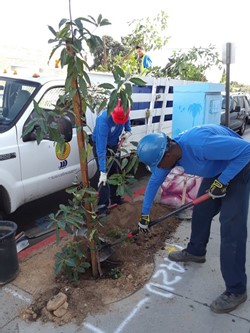
Figure 11 Conservation Corps of Long Beach tree planting.
Program Social Media:
- Arbor Week Poster Contest Winners
- Arbor Week, Tree City
- Arbor Week, Urban Forests
- Happy Arbor Day, California
Department: CAL FIRE
Program Title: Tribal Engagement
Program Description: Tribes play a crucial role in managing forest land. The Governor’s Wildfire Resilience budget provided $20 million in funding for California Native American tribal governments to support tribal-led wildfire resilience efforts. The funds will support Tribes in managing tribal land holdings, implement and promote tribal ecological knowledge in wildfire resilience, and establish wildfire safety for tribal communities. The goal of the program is to deliver resources to California Native American tribes to support wildfire resilience in a way that is efficient, respectful, equitable, and supports a more direct approach to getting State resources to valuable projects identified by tribes.
Program Impact: Initially, funds will be made available through CAL FIRE’s existing Forest Health program and be managed by CALFIRE with direction from CNRA. CAL FIRE has a tailored, fast, and effective grant program for California Native American tribes to support wildfire resilience activities and projects, hopefully targeted for this year. This program would require the use of existing grant and funding programs and parameters currently utilized by CAL FIRE. In the longer term, the funds will be utilized to establish an equitable and efficient process to get resources to California Native American tribes in a way that maximizes tribal autonomy and minimizes burdensome State processes and paperwork.
Resilience in Action: With the support of CNRA, Tribes are being consulted regarding the specific conditions that should be included into the grant program. CAL FIRE has developed Tribal Grant guidelines and plans to solicit applications in the next few months.
The State of California owns some of the most unique ecosystems on the planet. The Wildfire Resilience budget enabled California to dedicate direct funds for wildfire resilience programs for these unique ecosystems. The state is leading by example by improving and expanding forest and wildfire resilience on state-owned lands to reduce the risk of catastrophic wildfire, improve forest and wildland ecosystem health, and help meet Governor Newsom’s recent commitment to 30x30.
Department: State Parks
Program Title: State Parks Wildfire and Forest Resilience Program (Protecting State-owned Land)
Program Description: California State Parks lost more than 100,000 acres in the previous two fire seasons including Big Basin State Parks and Grover Hot Springs. California State Parks’ efforts include scaled up prescribed fire, forest management and fuel reduction, along with improved wildfire preparedness, facility protection, collaboration with partners, and on-going recovery and restoration from recent wildfires.
Ensuring these lands are protected from catastrophic wildfire will help fulfill both wildfire resilience objectives and Governor Newsom’s recent commitment to 30x30.
Program Impact: The State Parks State Parks Wildfire and Forest Resilience Program is dramatically expanding the pace and scale of fire resilience across more than 100 state parks. The new program purchased new equipment for prescribed fire and forestry, hired and trained new staff to execute projects, launched new projects, and expanded partnerships.
Hiring and training additional staff and equipment expanded the capacity of districts with pre-existing forestry and prescribed fire programs has increased treated acres. These programs have also expanded coordination and collaboration with other agencies, tribes, Fire Safe Councils, and other NGOs, utilizing new equipment purchased with wildfire resilience funds, and executing new contracts quickly using the legislative contracting exemption. Expanding partnerships and statewide programs by participating in multi-agency trainings such as the CAL FIRE Cultural Burning Workshops; Bay Area District and Diablo Range Districts are working with the Board of Forestry to prepare CalVTP documents to support fuel reduction and prescribed burns.
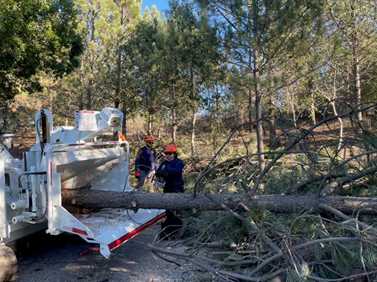
Figure 12 State Parks woodchipper operating in the Diablo Range.

Figure 13 Pile burn in Diablo Range, Pine Creek.
Resilience in Action: Developing new (or renewed) District-led wildfire and forest resilience programs through hiring, training, and outfitting new staff, preparing planning and compliance documents, and conducting initial fuel reduction treatments. Examples include:
- Central Valley District is collaborating with CAL FIRE, USFS, and NPS to conduct a 1,300-acre understory burn in Spring 2022 to reduce wildland fuels and protect Giant Sequoias in Calaveras Big Trees State Park.
- Colorado Desert District recently conducted its first collaborative burn with a newly established Native American Conservation Corps (NACC) in Cuyamaca Rancho State Park.
- Sierra District developed a new crew and completed a season of forest restoration in Plumas Eureka State Park, advanced the collaborative work along the west shore state parks in the Tahoe Basin, and undertook wildfire recovery in South Yuba River and Grover Hot Springs State Parks.
- Diablo Range District conducted its first pile burn operations in Mt Diablo State Park in over 20 years.
- Northern Buttes District is advancing a major forest management project in Castle Craggs State Park.
- Sonoma-Mendocino District is advancing forest management treatments in Salt Point State Park and Fort Ross State Historic Park.
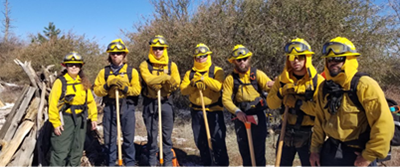
Figure 14 Native American Conservation Corps crew conducting collaborative burn in the Cuyamaca Rancho State Park.

Figure 15 Native American Conservation Corps members conducting pile burn in the Cuyamaca Rancho State Park.
Program Social Media:
- Diablo State Park prescribed burn
- Wildfire Resilience in California
- Bear Family Delays Prescribed Fire
- Protecting Parks During Fire
Department: Department of Fish and Wildlife
Program Title: Protecting State-Owned Land
Program Impact: The CDFW Wildfire Resiliency Initiative, has increased the pace and scale of vegetation management and post-fire restoration activities to promote resiliency to future wildfires on CDFW lands. CDFW has launched 53 fuel reduction and restoration projects around critical habitat and communities across the state. To date, fuel reduction has occurred on nearly 24,000 acres, more than 13,000 yards of fencing has been installed to support future grazing, and 2,200 acres of previously burned habitat has been reseeded with native plant species.
Resilience in Action:
- More than 14,000 combined acres have been actively grazed at the North Carrizo Ecological Reserve and Yolo Bypass and Tehama Wildlife Areas.
- At Pilgrim Creek Ecological Reserve, excess vegetation was removed around the perimeters of this 121-acre property of riparian and coastal sage scrub habitat to protect the site and adjacent properties, including Camp Pendleton and residential developments.
- At the Slinkard/Little Antelope Wildlife Area in Mono county, 2,200 previously burned acres have been seeded with native bitterbrush, sagebrush, perennial grasses, and forbs (>12,000 lbs. of seed) in partnership with California Deer Association.
- At Pine Hill Ecological Reserve, 7 acres of dense shrubs have been cleared along the property boundary, which borders a residential area (see video).
- At Butte Creek House Ecological Reserve, previously burned by the Dixie Fire, CDFW was able to quickly construct beaver analog dams to slow the flow of water and perform contour falling to reduce erosion (see video).
Program Social Media:
- CDFW Initiates Massive Wildfire Protection Effort at Wildlife Areas, Ecological Reserves Statewide
- Pine Hill Ecological Reserve wildfire resiliency and protection efforts
- Cosumnes River Preserve wildfire resiliency projects
Department: CAL FIRE
Program Title: CAL FIRE Unit Fire Prevention Projects
Program Description: Building on the success of past fuel reduction work, CAL FIRE continues working on strategically located fuel reduction projects in high wildfire prone communities throughout the State, starting new projects as soon as active projects are complete. CAL FIRE crews are committed to these projects that are vital to slow the spread of fires and provide anchor points for firefighters to implement suppression actions. CAL FIRE will complete these projects on a continuous basis, ensuring at least 45,000 acres are treated annually. Using the 2018 Strategic Fire Plan to guide CAL FIRE Unit and Contract Counties, specific fuel reduction projects are formulated into a plan and implemented using the Unit Fire Prevention Projects funding.
Program Impact: The Wildfire Resilience BCP funding package approved as part of the Governors 2021-2022 budget has provided increased funding for fuel reduction projects. Through the Early Action funding nearly 50 fuel reduction projects have been identified and are in various stages of implementation. These strategic fuel breaks and reduction in hazardous fuels reduce the severity of wildfires, while reducing the fire risk to vulnerable communities. They enable firefighters to approach a fire, take a stand, establish containment lines, and create evacuation routes.
Resilience in Action: Lake Shastina Fuel Break: This 326-acre fuel break, partially adjacent to Highway 97, was completed to protect the communities of Lake Shastina, Weed, and Juniper Flat. The Lava Fire crossed Highway 97 in a similar path as the 2006 Hotlum Fire. In 2006, there was no fuel treatment along Highway 97. While extreme fire behavior due to high winds and low relative humidity contributed to the Lava Fire crossing Highway 97, firefighters who were present during both incidents indicated that the Lake Shastina treatment greatly reduced fire intensity of the Lava Fire along the highway, allowing for firefighters to engage the Lava Fire more safely in comparison to the 2006 Hotlum Fire. The fuel break was successfully utilized to contain the Lava Fire in some areas and was used as an anchor point for direct fire line suppression. The fuel break was also utilized for a successful firing operation on a critical corner of fire line, directly protecting the communities of Weed and Lake Shastina.

Figure 16 Lake Shastina Fuel Break
Department: CAL FIRE
Program Title: Wildfire Prevention Grants
Program Description: CAL FIRE’s Wildfire Prevention Grants Program provides funding for fire prevention projects and activities in and near fire threatened communities that focus on increasing the protection of people, structures, and communities. Funded activities include hazardous fuel reduction, wildfire prevention planning, and wildfire prevention education with an emphasis on improving public health and safety while reducing greenhouse gas emissions.
Building on the success of past fuel reduction work CAL FIRE works with grantees on strategically located fuel reduction projects in high wildfire prone communities throughout the State. These projects provide valuable education on wildfire mitigation action, preparedness planning, and hazardous fuel reduction projects that enhance public safety and slow the intensity of wildfires to provide firefighters an anchor point for suppression actions. CAL FIRE will with grantees complete these projects on a continuous basis, ensuring at least 45,000 acres are treated annually through this program. Wildfire prevention grants support the wildfire preparedness and mitigation activities of federal, state, and local agencies, Native American tribes, and private nonprofit partners.
Program Impact: CAL FIRE awarded nearly $138 million in funding for 105 wildfire preparedness and mitigation projects across the State in Early Action FY 2020-21 appropriations. CAL FIRE closed the solicitation period on February 9, 2022 and is evaluating the applications to award up to $120 million from the FY 2021-2022 appropriations.
Resilience in Action: The Wildfire Prevention Grants Program funded the South Eagle Lake Fuel Treatment project that was instrumental in protecting the Lake Forest Estates community during the Hog Fire. Lake Forest Estates is a mountain community surrounded primarily by private timberlands and has been recognized as a “threatened development” in the Lassen County Community Wildfire Protection Plan. It is situated upslope of Highways 44 and 36, with both heavily travelled corridors being the source of numerous fire ignitions. The prevailing wind pattern comes from the Southwest, leaving the community vulnerable to fire starts along the highways. The treatment area extended from the community’s Western edge to Highway 44, or approximately 1.5 miles away at its closest point near the intersection of Highway 36.
The Hog Fire burned approximately one mile into the treated area before it was contained. The fuel reduction treatment in this area allowed firefighters to safely attack the fire from the ground with fire crews, fire engines, and bulldozers. The size of the fuel treatment (almost two miles long) allowed it to be effective not just to mitigate fire starts along the Highway 44 corridor, but also to contain this wind-driven fire that blew across the highway corridor.
Department: CAL FIRE
Program Title: Prescribed Fire & Hand Crews & Contract Counties
Program Description: Restoring ecological fire is one of the fundamental pillars of California’s wildfire resilience strategy. CAL FIRE has established dedicated fuel reduction and prescribed fire crews to continue to increase the amount of prescribed fire on the landscape and utilize this more as a management tool. CAL FIRE will leverage additional private and government crews as available to enable prescribed fires to be a more dominant tool for fuel reduction.
Program Impact: In June of 2018 CAL FIRE received funding for six Fuels Reduction Crews dedicated to prescribed fire and fuels management. The Governor’s budget increased the program to ten full time Fuel Reduction Crews.
The Fuel Reduction Crew are CAL FIRE Region resources and interface directly with Unit personnel on fuels reduction projects. They focus on hazardous fuels reduction techniques including prescribed burns, hand and mechanical fuel reduction, fire planning, and fire prevention education with an emphasis on improving public health and safety while reducing wildfire potential to California communities and forests.
Resilience in Action:
- The State Route 17 Emergency Shaded Fuel Break is a 494-acre fuel reduction project developed and implemented by CAL FIRE Santa Clara Unit and partners. The project extends for 6.5 miles along both sides of State Route 17 in Santa Clara County. The narrow, mountainous highway has few turnouts or roadside shoulders. Prior to project completion, surrounding forest vegetation encroached to within a few feet of the pavement. Decades of accumulated dead wood as well as wood from trees killed by the recent and ongoing sudden oak death disease, invasive species, and senescent brush lined the sides of the highway. The potential for a wildfire to spread from vegetation to nearby homes from highway users or vice-versa was extremely high. CAL FIRE Unit resources were used to conduct fuel reduction and establish the shaded fuel break.
- On August 14, 2020, CAL FIRE’s Morgan Hill Emergency Command Center dispatched a full wildland response to a confirmed vehicle fire with extension into the vegetation within the shaded fuel break on State Route 17 just south of the town of Los Gatos. The initial report from resources arriving at scene included a slope-driven fire with potential to grow to over 100 acres with structures immediately threatened. Initial attack resources arrived quickly and held the fire to half of an acre as the forward progress slowed due to the shaded fuel break project along the south-bound lane. The fuel break caused the fire to slow and reduced it to low intensity as it burned under the shaded canopy. The low intensity gave fire suppression resources an opportunity to aggressively attack the fire front and put it out before growing very large or reaching structures. CAL FIRE’s Santa Clara Unit, Fire Chief Jake Hess stated, “I have no doubt in my mind that this fire would have been an extended attack incident.”

Figure 17 Forward progress of a wildland fire started by a vehicle fire along Highway 17 slowed and successfully suppressed because of the installation of a strategic shaded fuel break.
Department: CAL FIRE/OES
Program Description: Simple retrofits like fine-mesh attic vents or double paned windows dramatically improve a home’s survival during a wildfire. Education and outreach can help homeowners make the right improvements. Program funding delivered to CAL FIRE and Cal OES will continue to implement the wildfire mitigation assistance pilot program created by Chapter 391, Statutes of 2019 (AB 38) to provide financial assistance for home hardening for low- to moderate-income and vulnerable populations. The State will continue to work with FEMA to pursue a potential $75 million match from federal funding match the state’s investment.
Program Impact: The program is launching three community scale home hardening pilot programs that will help retrofit the homes of some of California’s most wildfire vulnerable populations. The initial pilots are launching in San Diego, Lake and Shasta Counties. These pilots will also establish a framework for community scale home hardening programs to be run by the interagency Joint Power’s Authority run through CAL FIRE and CAL OES. This framework will also be a guiding document to simplify how communities can run their own home hardening program and access additional federal funding directly.
Resilience in Action: Early action funds launched a new initiative to offer direct assistance for hardening homes against wildfire embers for homeowners that can’t afford it. The early action funds established staff for the JPA authorized in 2019, but had never been funded, to coordinate home hardening efforts. The resources are being used to develop a home hardening framework and start pilot programs in three counties that are currently under negotiation. The pilots will begin in the Spring. By funding this new initiative in April rather than August, the pilot programs will be able to deliver results prior to wildfire season 2022, rather than later in the fall of 2022.
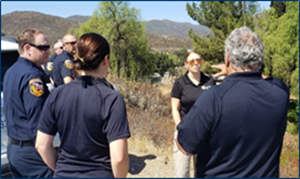
Figure 18 Interagency staff from CAL FIRE and Cal OES discussing home hardening needs.
Department: CAL FIRE
Program Title: Defensible Space Inspectors
Program Description: Defensible space coupled with home hardening is essential to improve a home’s chance of surviving a wildfire. By removing flammable vegetation and material around a home, defensible space provides a safe space for firefighters to defend a home and reduces direct flame and heat on a home during a fire. The CAL FIRE Defensible Space Inspection Program has been in place for over 60 years. Inspectors not only enforce California's defensible space rules, but the inspectors also work with residents to help them understand what specific steps they need to take to deliver defensible space for their home. This wildfire resilience funding adds inspectors to CAL FIRE’s base program of nearly 95 Defensible Space Inspectors for 3 months each fiscal year.
Program Impact: In 2021, the legislature changed the defensible space laws to include a new ember-resistance zone within the 5 feet immediately surround the home. Outreach and education to homeowners about these new standards is crucial to helping homeowners implement the new standards. With the importance of defensible space inspections and home hardening assessments increasing, this funding allows CAL FIRE to hire each Defensible Space Inspector for a full 9-months, the maximum amount allowed for a temporary help Forestry Aide position.
Resilience in Action: During the Camp Fire, a home was five times more likely to be destroyed by the fire if it was noncompliant with PRC 4291. By working the Defensible Space Inspectors, a full 9-months, additional properties will be able to be inspected by CAL FIRE. This engagement with homeowners gives them the opportunity to learn about the importance of defensible space and home hardening, and how to implement those mitigation strategies for their particular property. It also allows the property owner to ask a fire professional about other wildfire preparedness measures to take. It cannot be underestimated how important this one-on-one in person collaboration between the property owner and the Defensible Space Inspector is.
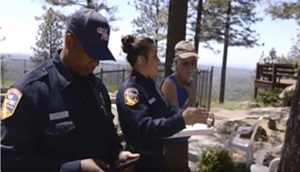
Figure 19 CAL FIRE Defensible Space Inspectors discussing defensible space and home hardening with homeowner.
Department: CAL FIRE
Program Title: Land Use Planning and Public Education Outreach
Program Description: CAL FIRE's Land Use Planning Program assists local governments (cities and counties) throughout California as they address the risk from wildfire by planning for new development in the State Responsibility Area (SRA) and the Very High Fire Hazard Severity Zones in the Local Responsibility Areas (LRA). Program staff work with local governments and CAL FIRE Units on topics ranging from Safety Elements of General Plans, development of Community Wildfire Protection Plans (CWPP) and Local Hazard Mitigation Plans (LHMP), Subdivision Review for compliance with Assembly Bill 2911 (Friedman, 2018), and assist communities to become recognized through the National Fire Protection Association's Firewise USA program. The CAL FIRE Land Use Planning Program resulted from Senate Bill 1241 (Kehoe, 2012).
The Office of the State Fire Marshal is partnering with the UC extension program and will deploy land use planners within critical cities and counties to support their wildfire preparedness activities and emergency plans.
Program Impact: The Wildfire and Forest Resilience funding augmented staffing to provide local technical assistance in community wildfire mitigation and land use planning. These staff helped increase the number of communities surveyed through the AB-2911 Subdivision Review Program. Additionally, these staff will assist CAL FIRE with the rollout of the new fire hazard severity zone maps to the counties with the SRA and cities with moderate, high, and very high fire hazard severity zones in the LRA.
Resilience in Action: The CAL FIRE Land Use Planning Program works with 56 counties with SRA and 189 cities within the LRA with development of their Safety Element, and CWPPs and LHMPs as needed. Additionally, California has nearly 500 Firewise USA recognized communities throughout the State. This grass roots effort helps community members organize and prepare for wildfire.
Department: University of California Agriculture and Natural Resources (UC ANR)
Program Title: Land Use Planning and Public Education Outreach
Program Description:
UC ANR’s Fire Resilience Program integrates the latest wildfire science into critical grass roots wildfire resilience organizations. The new UC Fire advisor team helps to enhance community wildfire planning, daylight best practices on community and state levels, and build community fire adaptation and resiliency throughout California.
The fire advisors conduct community-based research and outreach, translate research findings into public-facing materials and outreach to meet the needs of the local community. Fire advisors:
- Inform and enable the use of prescribed fire to reduce fuels, restore ecosystem function, improve forest and rangeland habitats
- Support implementation of the best fuel reduction strategies in varied conditions (e.g., prescribed fire, mechanical, and hand treatments)
- Incorporate home hardening techniques to build and retrofit homes for wildfire resilience, building and expanding on the existing Master Gardener network;
- Support defensible space and landscape management to reduce near-home fire vulnerabilities, reduce invasive species, reduce water usage, and enhance drought tolerance
- Engage with local planners to actively address wildfire resiliency, emergency response, and best management practices.
Program Impact: Using blended funding from this appropriation and a greenhouse gas (GHG) grant from CAL FIRE, UC ANR is in the recruitment process for several fire-related positions. These positions include:
- Fire Advisor, North Coast, wildland focused (funds supporting an existing grant-funded advisor)
- Fire Advisor, Lassen/Modoc, wildland focused
- Fire Advisor, Sonoma/Marin/Napa, wildland-urban interface (WUI) resiliency
- Fire Advisor, Southern California, wildland-urban interface (WUI) resiliency
- Program Coordinator, Placer County, state-wide responsibility

Figure 20 Lenya Quinn-Davidson, UC ANR North Coast Area Fire Advisor, leads a prescribed burn that helped elevate skills for local volunteer fire fighters.
Resilience in Action: The current team of advisors is working to help the California Board of Forestry in developing the regulatory language for AB 3074 and in training the UC Cooperative Extension Master Gardeners in learning about this new defensible space zone so they can deliver the best available science and policy guidance to California’s homeowners and residents. Additionally, the prolonged 2022 early winter burn window enabled many prescribed burn associations to complete successful burns across California’s fire-dependent ecosystems to help address fuel backlogs, restore ecosystems, control invasive species, and support cultural burning practices.
Program Social Media: The following social media handles share stories of UC ANR projects and activities.

Figure 21 Lenya Quinn-Davidson, UC ANR Fire Advisor demonstrates how to fill and use a drip torch at a prescribed burn association event.

Figure 22 Yana Valachovic, UC ANR Forest Advisor, reviews a home destroyed by wildfire and the foundation vent screen size.

Figure 23 Yana Valachovic, UC ANR Forest Advisor, works with the Insurance Institute for Business and Home Safety science team on the Marshall Fire in Boulder Colorado to investigate factors that contributed to home loss in the December 2021 event and bring information back to California’s education and policy efforts.
Department: Department of Conservation
Program Title: Regional Forest & Fire Capacity
Program Description: The Department of Conservation has established a Regional Forest and Fire Capacity (RFFC) Program to support local and regional efforts to assess the resilience of their forests and communities, and to develop a pipeline of shovel ready fuels reduction projects. With a sustained increase in funding, DOC is expanding the RFFC Program to all fire-prone regions in California and develop a consistent pipeline of high-value projects that can be executed in the next several years. Specifically, this increased funding has enabled the Regional Forest and Fire Capacity program to expand beyond its current eight regions to include five additional fire-prone regions including Southern California, Lake County, Greater Sacramento Region, Napa County, and Shasta County.
Program Impact: With the 2021 wildfire resilience funding, the Regional Forest and Fire capacity program executed 11 block grants, in turn supporting more than 100 subgrants and contracts for fire resilience activities, coordinating more than 200 organizations and 500 practitioners, cooperating with or co-managing projects with 30 California Native American Tribes, providing training and workforce development opportunities to nearly 1000 Californians, and accelerating at least 250,000 acres of forest health and fuel reduction projects toward shovel-readiness.
Regional Forest and Fire Capacity Program was able to scale from a phase 1 pilot program in specific areas throughout the State to now cover every fire-prone region in California expanding into Lake, Napa, Colusa, Yolo, Solano, Glenn, Tehama, Shasta, Southern Siskiyou, and Orange Counties. Funds also:
- Launched a prescribed fire association mentorship and support program, empowering and expanding prescribed fire expertise,
- Accelerated the Indigenous Tribal Stewardship Council, a tribal-led effort to design a natural resources body to better engage the State with indigenous natural resources needs.
Other activities that have been funded to date and those currently under consideration include:
- Continuing RFFC regional collaboration, planning, and prioritization efforts
- Leveraging RFFC funding with grant applications
- Organizational development to build capacity in the area of forest and fire project development, funding, and implementation
- Expansion of Prescribed and cultural fire training and networks
- Working with the USFS and implementing 3rd party NEPA projects
- Assisting Fire Safe Councils with community protection project identification, prioritization, funding, and implementation
- Developing invasive pest control programs for major pests such as Gold-Spotted Oak Borer beetle.
Further activities are planned through 2024.
Department: Sierra Nevada Conservancy
Program Title: Project Implementation in High-Risk Regions
Program Description: The Sierra Nevada Conservancy (SNC) stewards the highest fire-risk region in the State. The Sierra Nevada sources 60 percent of California’s water and more than 72 percent of the Sierra Nevada region is in a high fire-risk zone .
Effective at using science-based management and building community coalitions, the Sierra Nevada Conservancy supports efforts to restore resilience to the forested landscapes and communities of the Sierra Nevada. The Wildfire Recovery and Forest Resilience Grant Program prioritizes the planning and implementation of forest health projects in high-risk regions to create more resilient landscapes, reduce wildfire risk, and accelerate recovery from recent wildfires.
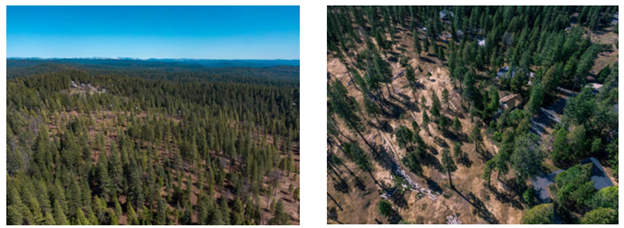
Figure 24 Fuel treatments can significantly modify fire behavior by reducing fire severity, size, and rate of spread, as well as create a buffer and protect homes and communities. This fuel treatment near the communities of Arnold and Avery in Calaveras County is representative of the types of fuel treatment projects that were supported by early action funding.
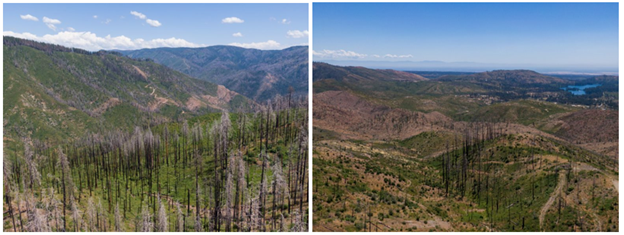
Figure 25 The Concow Resilience Project is in the Wildland Urban Interface of Butte County where dense conifer forest burned at high severity in the 2018 Camp Fire, resulting in almost 100 percent forest loss. The project is located on United States Forest Service (USFS) lands that surround the rural community of Concow, 25 miles north of Oroville. The project will restore 784 acres of severely burned Sierra foothill forestland using methods that will make future fire behavior less severe and result in a climate-resilient, carbon-stable woodland.
Program Impact: With the Early Action funding, the Sierra Nevada Conservancy condensed its grant cycle from nine months to three months to award 15 grants for shovel-ready wildfire resilience projects covering 11 thousand acres throughout the Sierra. These projects will help protect towns like Quincy and support upper watershed recovery efforts like restoration along the middle-fork of the American River. Under the expedited process, the SNC awarded grants by July 2021, meaning that work can launch as soon as weather conditions allow.
Although one Early Action grant was cancelled by the grantee after the Caldor Fire caused significant impacts to the project scope, SNC is currently assessing alternatives for that funding.
In January 2022, the Sierra Nevada Conservancy opened a request for proposals for $25 million of the $50 million in current year funding (Budget Act of 2021) provided to the agency. In February, SNC received $42.8 million in requests to treat over 1.5 million acres. Staff are currently evaluating those proposals and anticipate making funding awards in June. Another request for proposals for the remaining $25 million is expected to launch in the summer of 2022, pending SNC Governing Board guidance.
Program Social Media:
Department: Tahoe Conservancy
Program Title: Project Implementation in High-Risk Regions
Program Description: The Tahoe Conservancy is reducing wildfire risk to Tahoe communities and improving forest resilience. This work includes reducing flammable vegetation in the forests near homes, neighborhoods, and communities. It also includes managing forest vegetation and restoring meadows and streams to improve forest health and habitat so that these ecosystems are more resilient to insects, disease, wildfire, drought, and climate change. To get all this important work done the Tahoe Conservancy is also building capacity by creating new jobs and training programs, using smart technology, and creating efficient government processes.
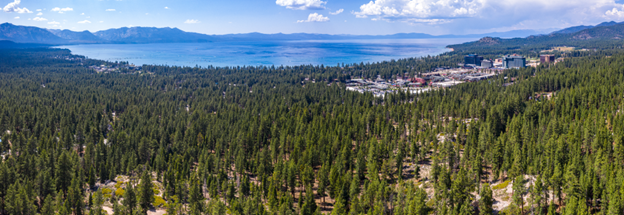
Figure 26 Aerial photo of south Lake Tahoe forested community.
Program Impact: The early appropriation of wildfire and forest resilience funds allowed the Tahoe Conservancy to double the size of its forestry crew in 2021, and to hire additional forestry aides to layout and prepare projects for future field seasons. The early appropriation also enabled Tahoe Conservancy staff to get more work done on projects partially funded by federal grants because they dedicated significantly increased time to preparing, surveying, managing, implementing, and monitoring projects.
The Tahoe Conservancy used early-action wildfire and forest resilience funding in 2021 to reduce flammable fuels on 200 acres of state-owned land. They also used early-action money to prepare almost 800 acres of thinning projects and 234 acres for prescribed fire that they will complete this winter and in future field seasons. Budget year wildfire and forest resilience funding is helping the Tahoe Conservancy and its partners attain the Tahoe Forest Action Plan’s goal of completing and maintaining all of Tahoe’s wildland-urban interface treatments by 2025 (totaling 14,000 acres Basin wide). The Lake Tahoe Basin will be the first National Forest region in the west to complete all WUI treatments across all ownerships – public and private.
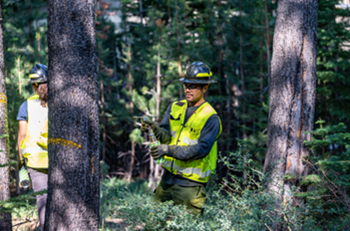
Figure 27 Forestry aides hired by Tahoe Conservancy marking trees for treatment.
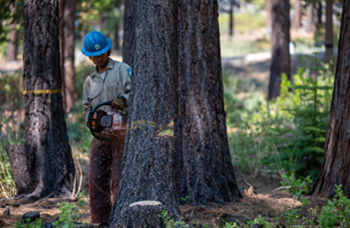
Figure 28 California Conservation Corps crew member conducting fuel reduction work.
Resilience in Action: Firefighters successfully defended Lake Tahoe neighborhoods from the Caldor Fire, without a single home lost in the Lake Tahoe Basin. Firefighters attributed previously completed wildland-urban interface treatments as a major contributor to their success. Wildfire and forest resilience funding is being used by the Conservancy to continue this work throughout other areas in Tahoe so that all neighborhoods and communities have the best odds of survival, no matter where a fire starts.
Program Social Media:
Department: Santa Monica Mountains Conservancy
Program Title: Project Implementation in High-Risk Regions
Program Description: The Santa Monica Mountains Conservancy prioritized wildfire resilience projects that proactively reduce the risk of wildfire, strengthen wildfire resilience, increase carbon sequestration, rally against the effects of climate change, and dedicate more resources to local community infrastructure.
Program Impact: In the spring of 2021, the Conservancy coordinated with partner agencies, non-profit organizations, local tribes, and other stakeholders to kickstart projects that performed one or more of the following types of wildfire resilience activities.
Wildfire resilience activities included:
- removing dry, hazardous, or non-native vegetation that poses ignition risk and habitat restoration
- increasing the efficacy of wildfire response through emergency operations equipment and workforce development
- ignition monitoring program
- fire hardening at-risk structures
Early funding had an immediate impact on addressing wildfire hazards posed by fuel-vegetation, human actions, and at-risk structures in the 2021 fire season. Many projects are ongoing to address fire risks this summer and the following years. The second phase of wildfire prevention funding extended and expanded the Conservancy’s wildfire resilience plan, allowing the Conservancy to continue to address priority fire hardening projects and further invest in capacity development in the climate, fire resilience, and habitat restoration fields.
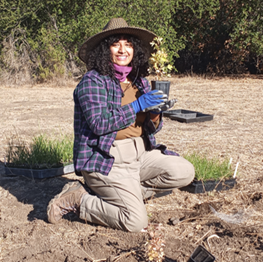
Figure 29 Santa Monica Mountains Conservancy restoration intern planting an oak tree.
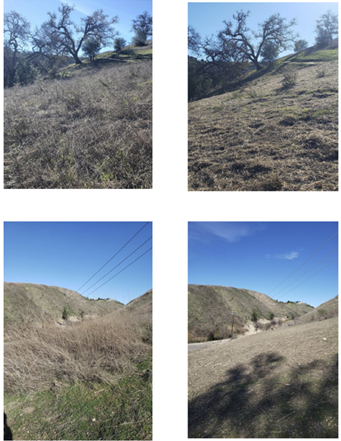
Figure 30 Before and after photos of completed fuel reduction treatments (mowing) to reduce flammable, flashy fuels in strategic locations of the Santa Monica Mountains.
Resilience in Action: Santa Monica Mountains Conservancy performed fuel reduction along the ignition-prone highway 101 corridor to combat fire hazards and invest in community health and safety. The program brushed and cleared hazardous vegetation at multiple freeway adjacent sites, and over 150 fire-resistant oaks have been planted. Conservancy-supported patrols on red flag days intercepted over 150 illegal fireworks over the fourth of July weekend on Mulholland Drive in Los Angeles.
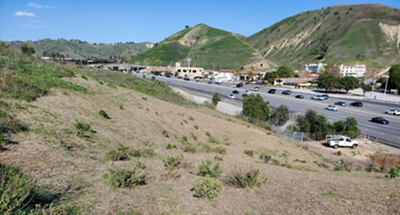
Figure 31 Completed roadside vegetation management project to reduce ignition risk posed by nearby US Highway 101.
Department: State Coastal Conservancy
Program Title: Project Implementation in High-Risk Regions
Program Description: The State Coastal Conservancy’s (SCC) Wildfire Resilience Program supports projects that improve natural lands to reduce the risk of catastrophic fire in areas where people live. These grants accelerate on-the-ground activities that reduce the risks of wildland fires.
Program Impact: The SCC awarded 35 grants in less than six weeks rather than six months. Funding was appropriated in spring of 2021 and awarded in early June. Most projects started work during the summer of 20021, including invasive species removal on an Audubon preserve in Orange County and a goat grazing program in Healdsburg that launched July 4th.
As of December 2021, more than 400 acres had been treated to reduce fire risk, including prescribed grazing, defensible space, creation of shaded fuel breaks, removal of ladder fuels, and chipping activities. SCC solicited proposals for the FY 21/22 funding. We received 89 proposals requesting $88 million in funding. SCC staff conducted a public webinar on these grants and met with more than 70 potential applicants to discuss projects. SCC expects to award funding in the fall of 2022.
Resilience in Action:
The SCC funded a grant to the Land Trust of Santa Barbara for grazing at the Arroyo Hondo Preserve. The Preserve was in the center of the Alisal Fire and the grazing was credited with saving the historic structures on the Preserve.
Program Social Media:
- $11m in grants to prepare coastal lands for the coming wildfire season
- Applications for our Forest Health and Wildfire Resilience Program Grants
- Grant Opportunity for Forest Health and Wildfire Resilience Projects!
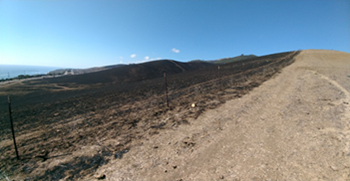
Figure 32 Grant to the Land Trust for Santa Barbara County to implement prescribed herbivory to reduce fuel loads and create a buffer to prevent wildfire spread in the southern portion of Arroyo Hondo Preserve. These photos are from shortly after the Alisal fire; the grazed land is unburnt.
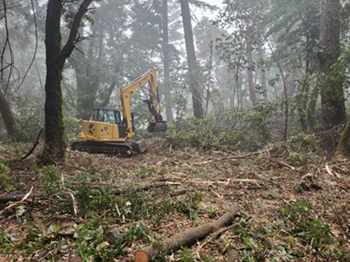
Figure 33 Grant to the to the Marin Municipal Water District to implement vegetation management projects identified in the Biodiversity, Fire, and Fuels Integrated Plan (BFFIP) in the Mount Tamalpais Watershed, and to reduce ladder fuels in the Marin County Parks Blithedale Summit Preserve.
Grant to the to the Marin Municipal Water District to implement vegetation management projects identified in the Biodiversity, Fire, and Fuels Integrated Plan (BFFIP) in the Mount Tamalpais Watershed, and to reduce ladder fuels in the Marin County Parks Blithedale Summit Preserve.
Department: LA Rivers and Mountains Conservancy
Program Title: Rivers and Mountains Conservancy Wildfire Prevention Grant Program
Program Description: The Rivers and Mountains Conservancy’s Wildfire Prevention Grant Program serves to increase wildfire resilience and prevention, improve forest health, restore burned areas, and stimulate workforce development within its 1,600 mi2 territory. It offers funding to eligible partners through three main categories associated with different geographic, ecological, and community needs -- 1) San Gabriel Mountains and Foothills Fire Prevention Planning and Management; 2) Urban Wildlands and Hills Fire Prevention Planning and Management; and 3) Forest Health: Fire Recovery, Response, Restoration, Education and Stewardship. Priority areas under the program include invasive species management and native habitat revegetation, fuel load maintenance, fire prevention planning, defensible space improvement, and public stewardship building aimed at creating educated and fire-resilient communities.
Program Impact: The Rivers and Mountains Conservancy expedited its process by approving targeted grants in mid-May 2021 to launch eight wildfire resilience programs including hiring California Conservation Corps fuels crews, fuel modification projects at Mount Baldy wilderness preserve and Diamond Bar, and landscape scale work in the San Gabriel Mountains. By the end of 2021, the RMC had funded wildfire resilience-building activities at nearly 40 sites across the Greater Los Angeles region, including over 2,000 acres of treated land in the Angeles National Forest and San Gabriel Mountains National Monument alone.
Resilience in Action: As part of the first round of targeted wildfire resilience-building grants awarded by the RMC, 25 dead, dying, flammable, or invasive trees were removed by the Puente Hills Habitat Authority (PHHA) from the Puente Hills, a popular area for outdoor recreation adjacent to several cities in eastern Los Angeles County. In addition to removing these fire-prone trees, the PHHA also begun to clear flammable brush and other “flashy” fuels in the Puente Hills, creating a fire-resilient buffer between nearby communities and the hillside. In the same region, the RMC also partnered with the Los Angeles Conservation Corps to prune and clear hazardous trees and brush at the Rio Hondo College campus, a community college serving the cities of Whittier, Pico Rivera, South El Monte, Industry, and the greater LA Region. To date, over 75,000 ft2 of land has been covered by fuel reduction activities, and more than 10 flammable trees have been pruned or removed from the site with a total of 503,000 ft2 of coverage and 61 trees scheduled for pruning by Spring 2022.
Program Social Media:
Department: San Diego River Conservancy
Program Title: Project Implementation in High-Risk Regions
Program Description: The San Diego River Conservancy is working to advance the objectives to strengthen fire resilience including creating fire breaks and defensible space, fuel reduction, restoration and enhancement of fire-prone habitats using methods known to reduce fire risk, and improving fire access roads, among other activities.
Program Impact: Early action investments began with projects to create defensible space and fuel breaks and reduce mostly non-native invasive species in the cities of San Diego, El Cajon and Santee. The County of San Diego Department of Parks and Recreation will focus on reducing fuel loads within 25,000 acres in its parks and preserves, and the Cleveland National Forest is implementing activities for hazard fuel reduction and wildfire emergency preparedness. In addition, wildfire funding was awarded to both the Kumeyaay Diegueño Land Conservancy for fire management equipment and the Barona Band of Mission Indians for a 4-wheel drive brush rig.
Through a grant to the Resource Conservation District (RCD) of Greater San Diego County, the RCD has addressed a backlog of 250 defensible space chipping projects for disabled and low-income homes in the San Diego area. These funds are being used to establish defensible space around homes in high fire risk zones in San Diego County and addressed project backlogs by the end of summer 2021.
The San Diego River Conservancy reduced its timeline from 9 months to three weeks to get grants signed and work started. Projects were able to launch by Memorial Day 2021. A typical appropriation starting in July with a 9-month grant process would not have seen projects launch until Memorial Day 2022, expediting results by a full year.
Resilience in Action:
United States Forest Service – Cleveland National Forest
The Cleveland National Forest’s Wildfire Resilience and Forest Health project will reduce fuel loads across approximately 1,855 acres, 100 miles of road brushing and maintenance, and prescribed fire supplies. The project also includes forest stand exams for 784 plots to protect sensitive resources and plan future work to restore oak woodlands and expand forest management. Project sites are located within the Cleveland National Forest and include the San Diego River, Sweetwater River, and Tijuana River watersheds.
The project will also construct a helicopter landing zone and three 10,000-gallon underground water tanks to provide a local source of water to help reduce wildfire severity and improve the safety of visitors and first responders in this remote area. These improvements are located at Three Sisters Falls Trailhead in a remote area of the San Diego River’s upper watershed. This multi-faceted project is designed to enhance the capability for wildfire suppression, as well as the rescue of people within the High Fire Severity Threat Zone. To support this added workload, Cleveland National Forest will hire additional employees to ensure the protection of sensitive resources and surge staffing for prescribed fire.
Kumeyaay Diegueño Land Conservancy
Through the Kumeyaay Diegueño Land Conservancy, the Campo Band of Mission Indians, the Campo Fire Protection District, the Jamul Indian Village, the Manzanita Band of the Kumeyaay Nation, the Viejas Band of Kumeyaay Indians, and the Sycuan Band of the Kumeyaay Nation, will use wildfire funds to procure fire-related equipment during wildland fire events. These tribal reservations are located in a very high Fire Hazard Severity Zone and cover more than 35,000 acres.
The project will provide new fire vehicles and fire-related apparatus such as skid steers with masticators to help reduce the risk of fire by implementing fuel reduction, vegetation management, defensible space, and fuel breaks targeting the removal of diseased, dead, and dying trees.
Department: CAL FIRE
Program Title: State Demonstration Forests
Program Description: The California Department of Forestry and Fire Protection (CAL FIRE) operates nine Demonstration State Forests totaling approximately 72,000 acres. The forests represent the most common forest types in the state.
These living laboratories focus on applied research and testing the best forest management practices for carbon sequestration, forest health and fire resilience. Demonstration forests provide answers to some of the most difficult forest management questions that we currently face under a rapidly changing climate, from stand-density, to ecological co-benefits, to better understanding forest hydrology.
With the ability to conduct decadal-long studies, the demonstration forests inform updates to the forest practice rules governing the 8 million acres of commercial timberlands in California. The forests also provide research and demonstration opportunities for natural resource management, along with recreation opportunities, fish and wildlife habitat, and watershed protection.
Program Impact: In addition to supporting operating costs, this $10 million investment is critical to help modernizing the mission of the demonstration forests. Activities will include:
- A carbon sequestration study
- Prescribed fire research
- Fuel reduction work to enable prescribed fires
- Upgrades to trails and recreational facilities
- Removal of slash piles from old timber harvests
- Improved community communication programs
- Resources to support tribal co-management
Mountain Home: The 2020 and 2021 fire seasons killed an unprecedented number of monarch giant sequoias in California. However, the Grove of Old-Growth Giant Sequoias at Mountain Home were protected from catastrophic loss during the 2020 Castle Fire due to a decade of active management, including timber harvest, fuel reduction, and prescribed burning. Funding then supported reforestation of these forests.
Mountain Home Giant Sequoia Grove Post-Castle Fire (2020) statistics:
- Giant Sequoia trees (larger than 80” DBH): 4,519
- 2021 Re-inventoried: 4,060 (89.9%)
- Mortality: 268/4060 (6.6%)
Note: (Re-Inventory to be completed in 2022)
Jackson Demonstration State Forest: Understanding the role forests play in watersheds is crucial, especially during California’s ongoing mega drought. The Jackson Demonstration Forest has been conducting one of the most comprehensive forest hydrology studies in the nation with data going back to 1962. CAL FIRE just executed a 100-year Memorandum of Understanding with the US Forest Service Pacific Southwest Research Station to continue the Caspar Creek Watershed Experiment. The third experimental harvest in this study occurred in 2018. Specific plots were harvested at different densities to track the water yield relative to the forest density. The 2018 harvest is starting to yield preliminary results on the influence of forest stand density reduction on watershed function and yield. This is critical to understanding how forests can help protect watershed and mitigate drought conditions.
Program Social Media:
- Jackson Demonstration State Forest
- Soquel Demonstration State Forest
- Caspar Creek Experimental Watershed Experiment
Department: CAL FIRE
Program Title: Research and Monitoring Program (FRAP)
Program Description: CAL FIRE (FRAP) implements a Research and Monitoring program that supports the following: Forest Inventory Analysis (FIA) Intensification - remeasurement of California forests in half the normal time (i.e. moving from a 10yr to a 5yr remeasurement cycle); increased Prescribed Fire Monitoring to better understand effectiveness of expanded use of prescribed fire; continued investment in collaborative research in wildfire and forest health issues; and increase the number of Forest Health Research grants currently awarded each year.
Program Impact: A network of thousands of small forest plots throughout the California make up the forest inventory assessment. These plots are re-measured every decade for specific ecological indicators, creating a measured dataset that informs the State’s understanding of biodiversity, forest growth rates, carbon storage, and climate risks. Given the speed of climate change and stressors, this funding is enabling CAL FIRE to measure these plots every five years, rather than ten, to ensure decisions are being made on the most current ecological realities.
- Funding established two FIA Coordinator positions that will expand CAL FIRE’s capacity to implement FIA Intensification and to report on forest health trends.
- Additional funding for prescribed fire monitoring will allow hiring of additional field crews and expand monitoring to other ecosystems outside the Sierra. Additional funding allowed FRAP to fund roughly a third of Forest Research Grant proposals submitted (i.e., program received research proposals totally $22 million) in the last grant solicitation.
Examples of completed studies include:
- Keeping fire on the Landscape: Consequences for Carbon Balance and Forest Resilience
- The Carbon Consequences of Catchment-Scale Prescribed Burning
Department: CAL FIRE
Program Title: Interagency Forest Data Hub
Program Description: The Hub will expand data sharing and require annual reporting, including acres treated, in a common data repository. These coordinated information products would be rapidly and reliably made available to land managers and decision-makers.
Program Impact: The development and sustainment of the Hub will help ensure interagency assets are centrally accessible to all government scientists and land managers, university researchers, NGOs, and other users across the state, to ensure policy makers and land managers are using the most up-to-date data and analytics to inform policy, planning, monitoring, and reporting.
The Hub is envisaged to include:
- Unified interagency geospatial database for reporting acres treated, management activity, etc. (prescribed fire, reforestation, thinning, mastication, etc.).
- Data on fire risk, spread, fire intensity, land cover change, and other key information.
- Field-based forest inventory data.
- Collection of remote sensing imagery acquisitions, such as airborne LiDAR, hyperspectral (imaging spectroscopy) data, and other high-resolution data sets.
The Hub may host new and emerging technologies designed to inform forest management practices at multiple scales tied to the Regional Forest and Fires Capacity Program.
Resilience in Action: The Hub is developing an interagency forest treatment tracking system, which will capture projects funded through the State’s wildfire resilience funding as well as federal and state partners. This fulfils one of the key actions of the Forest and Wildfire Resilience Action Plan.
Department: CAL FIRE
Program Title: Prescribed Fire Liability Pilot
Program Description: Achieving long-term forest and wildfire resilience requires scaling prescribed fire across California’s fire-adapted ecosystems. In the last few years, California has removed significant barriers to prescribed fire, including reforming permitting for prescribed burns, training, and certifying prescribed fire managers (“burn bosses”), and investing in and equipping local prescribed fire collaboratives.
However, private insurers do not currently provide coverage for prescribed fires space. The perceived risk of wildfire and the limited number of private prescribed burns in California make private prescribed fire insurance an unappealing business model. Although property damage and escapes are rare from a prescribed fire, a fund to cover the cost of potential losses incurred from a permitted prescribed fire partially limits the financial risk of private burners and incentivizes more permitted private prescribed burns.
Program Impact: SB 170 (2021 Budget Act, Chapter 240, Statutes of 2021) funded a $20 million Prescribed Fire claims fund for the State to establish a limited fund as a pilot project to cover certain losses incurred under a permitted prescribed burn that followed its burn plan.
Resilience in Action: Because the prescribed fire fund is a pilot, it will require additional legislative authorities to bring the program to fruition.
CAL FIRE, Department of Insurance, Department of General Services, and California Natural Resources Agency will be proposing the claims fund structure and function that will allow for private prescribed fire practitioners to access the fund to cover certain losses to facilitate more private burning. This team is developing legislative language to be able to implement the $20 million fund.
Department: CNRA
Program Title: Remote Sensing
Program Description: CNRA is investing in high resolution data and analytical products for public safety and to protect ecosystems. Developing reliable base data such as remote sensing like LiDAR will improve predictive modeling, project planning analytics, and long-term monitoring.
Program Impact: In addition to nearly $8 million dedicated to new LiDAR data collections across California and the development of associated derived products, the remainder of CNRA’s Remote Sensing Portfolio (nearly $17 million) will deliver new remote sensing acquisitions, processed data products and analytics for application, including:
- Establishment of a remote sensing flux tower network in the California redwoods to collect data on water and carbon dynamics necessary to calibrate satellite-based data products and inform forest health, carbon, and management assessments.
- Targeted and strategic collection of hyperspectral and multispectral imaging to remotely detect tree canopy water content, scorching post-fire, species identification, and establish high resolution vulnerability maps across forested systems highly impacted by climate change dynamics.
- Production of forest structure and individual tree information using high resolution data from the National Agriculture Imagery Program (NAIP) for applications including forest, post-fire, carbon, and biodiversity assessments.
- Automated, near-real time Statewide Tree Mortality Early Warning System to detect vulnerability and stress in the state’s forested systems, producing maps of potential mortality to inform management interventions and fire and fuels mapping updates.
- Statewide automated Change Detection System to remotely detect disturbances in forests, shrublands and grasslands associated with fire, tree mortality and harvest events to inform evaluations of forest cover loss and recovery and supporting validation of treatment tracking datasets.
- Statewide Forest Health and Vulnerability Evaluation System blending field-based and remotely sensed data including water, biodiversity, forest, and carbon to spatially assess and quantify wildfire and forest ecosystem response to management including fuel reduction and forest health treatments.
Resilience in Action: CNRA has already committed nearly $4 million in an approved cost-share with the USGS to acquire over 20 million acres of LiDAR data throughout the Sierra Nevada, and northern California. This will enable a detailed and real time understanding of the major fire impacts and risks across California’s critical watersheds.
The State is actively working with agency partners and the public in a series of workshops to determine needs for multiple derived data products to bring raw LiDAR data collections into operational use for various public safety, wildfire response, and natural resource management applications.
Department: Air Resources Board
Program Title: Prescribed Fire Monitoring and Reporting
Program Description: Successfully increasing prescribed fire must be supported with effective planning, smoke monitoring and reporting to assess health and climate impacts, as well as public education and outreach to secure awareness and support. Funding is included for the California Air Resources Board and local air districts for increased monitoring, permitting, and communication related to prescribed fire.
Program Impact: Air districts statewide have achieved documented increases in prescribed burn smoke monitoring, and in public notification and public education. Smoke monitors are cached at five locations across the state for air district use. The California Smoke Spotter mobile app was released to provide a public burn and smoke notification platform. The State’s prescribed fire information reporting system (PFIRS) is being upgraded in coordination with forest data system improvements at CALFIRE and other agencies.
Resilience in Action: Shasta County is among the CARB Prescribed Burn program’s leading successes. In 2020, documented prescribed fires within the District nearly tripled over the preceding three-year average, from 64 to 173. The number of documented acres burned doubled over the same time period, from 4,700 to 9,600 acres.
Program Website Links:
- California Air Resources Board launches California Smoke Spotter app | California Air Resources Board
- Prescribed Burning | California Air Resources Board
- Agricultural & Prescribed Burning | California Air Resources Board
- Smoke Management Programs and Burn Decisions - Other Air Districts | California Air Resources Board
Traditional Media Coverage
- Yuba Net, May 2021: Beale Fire Department, Wildland Support Module set to conduct prescribed burn
- San Francisco Chronicle, July 2021: The number of controlled burns is rising in California. Is it enough?
- ABC 10 in Sacramento, Jun 2021: New app tracks smoke in California
- Pew Charitable Trusts, September 2020: California May Need More Fire to Fix its Wildfire Problem
- North Bay Business Journal, August 2020: Lack of grazing, prescribed burns adds fuel to California’s wildfires, say experts and stakeholders
California Smoke Spotter launch (May 2021):
- CARB launches #CASmokeSpotter
- Download #CASmokeSpotter to find out where #prescribedfire smoke is coming from
- #CASmokeSpotter’s personalized alert settings can help you plan for possible #prescribed fire smoke
- The best way to protect yourself from #prescribedfire smoke is to plan for it
Between the initial launch in late May, and a reminder in early June to download California Smoke Spotter in preparation for a prescribed burn at Beale AFB, our Twitter campaign for the app reached more than 42,000 people.
Department: Board of Forestry
Program Title: California Vegetation Treatment Programmatic Environmental Impact Review (CalVTP)
Program Description: Communities raised concerns that the CEQA environmental review process was slowing down their ability to launch critical wildfire fuel reduction projects. The California Vegetation Treatment Programmatic Environmental Impact Report(CalVTP) is an environmental impact report covering 20-million-acres of the non-federal, fire-prone land in California. Among the largest programmatic reviews ever conducted, the CAL VTP enables efficiencies in the CEQA process that can reduce review times from multiple years to just months.
This approach reduces redundancies without sacrificing environmental quality by allowing project sponsors to build on known and verified environmental analysis as they begin their site-specific environmental review for individual projects.
The CalVTP Programmatic Environmental Impact Report provides a powerful tool to expedite vegetation treatments that reduce wildfire risk while conserving natural resources.
Partner departments like Regional Water Boards and California Department of Fish and Wildlife collaborated with the Board of Forestry and Fire Protection to ensure their environmental standards are reflected in the CAL VTP, creating a streamlined environmental review process for approvals needed from those agencies.
CEQA exemptions are still wildly used for projects that qualify, but projects that are larger or more complex may not be exempt from CEQA, so will use the CAL VTP to achieve their environmental compliance. s
Once the environmental analysis is complete and approved under the CAL VTP, project proponents will use their review for up to ten years, enabling them to complete multiple rounds of vegetation treatment and maintenance using the same environmental review.
Program Impact: To help ensure consistent and easy use of the new streamlined CalVTP process, wildfire resilience funding enabled contracting with an environmental consulting firm to conduct the Project Specific Analysis (the application) required by the CAL VTP for a wide array of State wildfire resilience projects across departments and vegetation types in California. This helps ensure that local foresters have adequate resources to become acquainted with this new process.
Project proponents have now proposed 90 projects under the CalVTP. Already, 26 projects have been approved for implementation and are in various stages of completion.
Resilience in Action: The Shaver Ranch VTP (2020-8) in Fresno County (in our Fresno Kings Unit) was submitted prior to the Creek Fire in 2020. The Creek Fire impacted the majority of the project area, roughly 90% of the overstory and understory had mortality. The VTP has different treatment types and activities built into the document, which are then analyzed for each potential Effect and have Mitigation Measures (MM) and Standard Project Requirements (SPR) already in place. Having those already built in allowed the Unit to resubmit the project without having to rewrite the entire VTP or conduct a separate CEQA review. They updated their analysis with the burn area and refocused their treatments on the recovery and reforestation.
Department: Water Boards
Program Title: Vegetation Treatment Water Quality Permitting
Program Description: The State Water Boards developed and began implementing a streamlined statewide water permit for project covered by the Board of Forestry’s Vegetation Treatment Program Programmatic EIR. This made the CalVTP a fully streamlined permit with no additional paperwork or fees.
Program Impact: State Water Board adopted a statewide water quality permit in July 2021 that leverages the CalVTP Programmatic Environmental Impact Report. Projects that are found to be within the scope of the CalVTP PEIR are automatically enrolled in the permit. Following adoption, Water Board staff began developing implementation tools including guidance information for Regional Boards, and template communications for permittees. State Water Board has hired two limited term Environmental Scientists who will start in March 2022 and who will further expand the ability of Water Boards to support vegetation treatment in the state.
Resilience in Action: The Water Boards:
- Adopted a statewide water quality order for vegetation treatment projects (General Waste Discharge Requirements for Vegetation Treatment Activities Conducted in Conformance with the California Vegetation Treatment Program, Order WQ 2021-0026-DWQ),
- Began implementation issued notices of enrollment to CalVTP projects,
- Revised the State Water Board website with frequently asked questions and other useful information about implementing the statewide water quality order, and
- Hired two limited-term Environmental Scientist who will further develop the vegetation management program at the Water Boards.
Department: IBank
Program Title: Climate Catalyst Fund
Program Description: Businesses in the forestry sector face real challenges raising capital in the private lending market. Creating lower-interest loans removes a major market barrier and expands critical businesses in this sector from micro-mills to masticators to innovative wood and energy products. The Climate Catalyst Fund was established with early action funds in 2020-21 to help jumpstart private sector equipment using wood and woody material removed from forests for wildfire resilience.
Program Impact: Capital was provided in the fall of 2021, along with a crucial legislative change to enable IBank to receive the funds appropriated in 2020-21 and 2021-22. The program was then formally launched in January 2022 and is actively looking at transactions now.
Resilience in Action: With the combination of appropriated funding and legislative authorization for IBank to receive and deploy capital, IBank leadership was able to seek and ultimately receive IBank Board approval to launch the program. Since the launch in January, IBank has received more than 40 expressions of interest in receiving loans or guarantees from the Climate Catalyst Fund. The IBank staff is currently reviewing these requests and engaging third-party capital partners to further leverage state dollars, with the expectation of presenting initial transactions to the IBank Board later this year.
Program Social Media:
Department: Office of Planning and Research
Program Title: Market Development
Program Description: OPR will fund five pilot projects to develop regional strategies to establish reliable access to woody feedstock through a variety of feedstock aggregation mechanisms and organizational innovations. The pilots will develop plans to improve feedstock supply chain logistics within each target region through an institutional arrangement with the structure, authority, and resources to aggregate and initiate long-term feedstock contracts. Each project will explore and assess market opportunities of potential woody biomass businesses in their region and commit to increasing feedstock aggregation on all relevant land types, including private and non-commercial land, especially where opportunity exists to produce community fire resilience benefits. The pilots are distributed across single and multi-county regions in the Central Sierra, the Lake Tahoe Basin, the Shasta and Lassen region, the North Coast and Marin County.
Program Impact: Project proposals were submitted on November 1, 2021. Grant agreements completed on January 31, 2022, and are currently under review with DGS. Grant terms are set to run through March 31, 2025. Project activities and schedule of deliverables will commence upon completion of DGS review. OPR convenes bi-monthly Learning Cohort meetings for all five pilots to coordinate project development, to share research findings and present project deliverables to external stakeholders throughout the grant term.
Resilience in Action: In anticipation of the OPR pilots and their project activities, a dozen or more biomass industry members have been actively coordinating with OPR and GO-Biz to evaluate project sites for biomass facilities within the five OPR pilot project regions. Biomass business from Europe, the US Southeast and East Coast, and within California have expressed strong interest in investment opportunities that otherwise would not be financially feasible without the feedstock aggregation activities under development within the OPR pilots. Based upon the interest expressed through biomass business inquires at GO-Biz, the project has sent a strong demand signal to the biomass industry that California is ramping up and creating an attractive economic environment to drive sustainable forest management and increase community fire resilience benefits.
One of the limiting factors to increasing the pace and scale of wildfire resilience is having enough trained crews and professionals to deploy throughout the State. From fuels crews to machine operators to professional foresters, there is a workforce shortage throughout the entire space. By expanding our own workforce through the Conservation Corps and Fuels Crews, to launching new grant programs we are creating a foundation to ensure that we have a trained workforce to sustain a high pace of fire resilience for years to come.
Department: California Conservation Corps
Program Title: WORKFORCE DEVELOPMENT (Forestry Corps Crews)
Program Description: The California Conservation Corps Forestry Corps program trains youth in a year-long program in forest resilience. Often recruiting from lower income or vulnerable communities, these young men and women sign up for a year of service and training. These fuel reduction crews assist local departments, cities, counties in completing priority fuel reduction projects to reduce wildfire risk in fire-threatened areas. Often elbow-deep in poison oak and working in long-hot conditions, Forestry Corpsmembers remove hazardous fuels to reduce wildfire risk and re-plants trees to recover after a fire, while gaining valuable work experience in the climate and green industries.
Program Impact:
- In November, the Pomona Forestry Corps began the initial enrollment of Corps members and has begun training and work on fuels projects.
- The Chico Forestry Corps started operations on February 1, 2022, with a project in Big Chico Creek Reserve with DWR and is currently in fire training at the Magalia Fire Center.
- The Tahoe Forestry Corps, based out of the Greenwood Satellite location, is rolling out their training and starting project work in May 2022.
- Crews completed multiple professional trainings including: CCC 40-hour Chainsaw Training, Chipper/Chainsaw safety Training partnering with the City of Monrovia Tree Crew, and Flood Fighting Techniques
Resilience in Action: From enhancing fire protection for the McKinley Children’s center in San Dimas to executing a fuel reduction project for the Hubert Eaton Scout Reservation in Cedar Glen, the Forestry Corps are a well-trained, nimble workforce able to step in and get work done quickly and effectively.
The Pomona Forestry Corps Crew has hard at work conducting fuel reduction on a 36-acre thinning project near Lake Arrowhead, removing. The project consists of thinning out 85% of the brush that has overgrown while leaving islands behind for the habitat.
In addition to their service in fuel reduction, Corpsmembers create a workforce pipeline. Corpsmember Laura Martinez from Bakersfield, California joined the CCC in October 2020. In November of 2021 and the Pomona Forestry Corps Crew in November 2021. Upon joining the Forestry Corps Crew, she received training and hands on job experience in wildland fire fighting, forestry management and fuel reduction. On March 3, 2022, Corpsmember Martinez left the CCC for a wildland firefighting position with USFS Lassen National Forest.
Program Social Media:
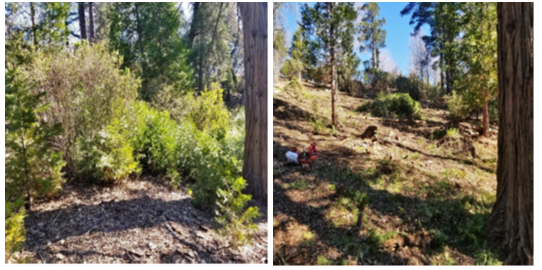
Figure 34 Before and after treatment in upper Little Bear Fuel Reduction, Lake Arrowhead.
Department: California Conservation Corps
Program Title: Residential Centers (Capital Outlay)
Program Description: To further expand forestry corps and fire crews the CCC is expanding and enhancing the Residential Program. With housing insecurities, lack of affordable housing, homelessness, and other social factors that can impact vulnerable youth, expanding residential program does not promote Corpsmember’s wellbeing, but it also enhances the communities in which they serve. Most residential locations are in rural location where population numbers couldn’t field 4-6 youth crews. Additionally, Corpsmembers experiencing new communities embodies the inclusive nature of the CCC. Residential locations also help with fire or other emergency response time as the Corpsmembers are available and ready throughout the entire day and seven days a week.
Program Impact: The opening of the new Residential dorms and kitchen complex at the Placer Center located in Auburn CA enabled 90 Corpsmembers to return to that community and do very meaningful fuel reduction work. It has also provided a quicker response time for two Types I fire crews working out of the residential facility as they are their 24 hours a day.
This investment is launching capital development projects for building residential facilities for new fuel and fire crews at the CCC Auberry and Los Piños facilities.
Resilience in Action:
- CCC Capital Outlay - Placer. Note the linked video details progress as of July 2021 and construction is now complete.
- Los Piños Center - Includes a video tour.
Program Social Media:
Department: California Conservation Corps
Program Title: Fire Crews
Program Description:
The California Conservation Corps operates more than two dozen wildland firefighting hand crews. These fire hand crews operate at 14 CCC locations across California. The CCC partners with CAL FIRE, U.S. Forest Service, and Bureau of Land Management to provide hand crews to fight and prevent wildland fires throughout the state.
In 2021, the Legislature and administration approved funding for eight (8) permanent (“year-round”) and six (6) seasonal CCC-CAL FIRE crews. This partnership addresses the state’s need for increased firefighting capacity and workforce development. The effect is two-fold: in the off season, greater fuels work is completed; and during fire season, there are more crews for fire and emergency response. Altogether, these structures work toward decreasing the impact of, if not preventing, catastrophic wildfires.
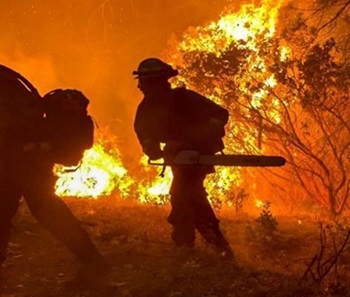
Figure 35 San Diego Corpsmembers hustle along the fire line near Sly Park in El Dorado County as they help protect structures from the approaching Caldor Fire.

Figure 36 Corpsmembers on the Pomona 1 fire crew cut fire line with hand tools on the Peak Fire near Crestline, CA.
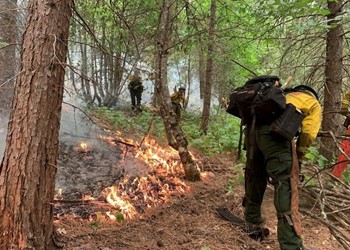
Figure 37 CCC Pomona Corpsmembers with CAL FIRE partnered Crew 1 work to construct handline in a remote section of forest near Pollock Pines in El Dorado County to slow the spread of the Caldor Fire.
Program Impact:
In 2021, and per the Fire Resiliency package, the CCC onboarded the following fire crews:
Year-round: Delta (2), Tahoe (2), Los Piños (2) / Seasonal: Fortuna (1), Monterey (Watsonville) (1), Pomona (1), Redding (1), San Diego (1), and Ukiah/Willits (1)
In 2022, and per the Fire Resiliency package, the CCC proposed to onboard the following fire crews:
Year-round: Los Piños (2), Ukiah/Willits (2), Monterey (Watsonville) (1), Pomona (1), San Diego (1), and Fresno (1) / Seasonal: Fortuna (1) and Redding (1)
Resilience in Action:
- Between July 1, 2021, and December 31, 2021, the CCC had 46 Corpsmembers transition out of the CCC into jobs related to fire, forestry, or arborist-related careers.
- Together, these 12 crews went on 199 dispatches to a total of 188 incidents so far in the current fiscal year. They were assigned to these incidents for an aggregated 1,102 days. Corpsmembers from these crews have 174,697.5 emergency project hours logged in C3. This does not count hours that were not invoiced (e.g., several single day fires that were extinguished within the regular workday).
Program Social Media:

Figure 38 Los Piños Center Corpsmembers approach the flames of the Airport Fire in Corona, CA.
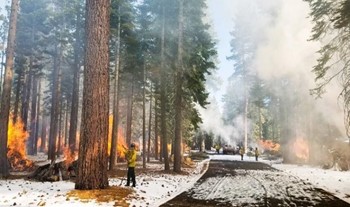
Figure 39 CCC Tahoe fire crews help with burn piles in the greater Tahoe Basin. Those piles removed dead vegetation and other debris that could help fuel large wildfires this summer and fall.
Department: CAL FIRE
Program Title: Workforce Training
Program Description: CAL FIRE offers grant funding through its Workforce Development Grant program to applicants seeking to increase California’s workforce capacity in the fields of logging, fuels treatment, forest sector transportation, forest sector manufacturing, or other forest sector support services are eligible to apply for workforce development funding. Research and Development ancillary the workforce development topics discussed may also be funded.
Program Impact: CAL FIRE has 8 grant agreements totaling $15.4 million with partners who are doing workforce training. These programs are offering training to 400+ participants in forest-sector fields ranging from forestry technician training to heavy equipment operations. CAL FIRE is currently soliciting additional projects and has received broad interest in furthering workforce development training in forest-sector fields.
Resilience in Action: Shasta College has successfully developed a certification within the California Community College system with a new program that trains students on state of the art equipment.
Wildfire Resilience Budget Table Report
Additional Airtable Views:



